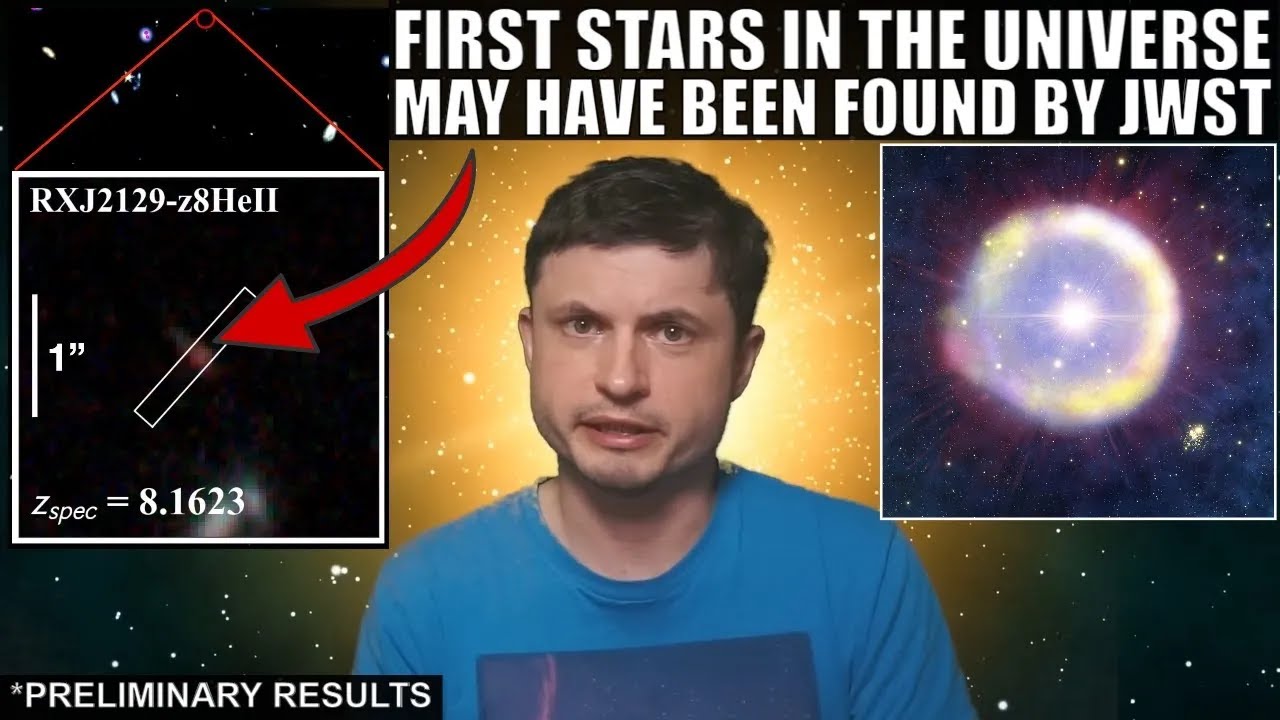For historical reasons, astronomers have adopted a particularly confusing nomenclature for the kinds of stars found in the universe. Population I stars are those like the Sun, relatively young and enriched in elements formed within earlier massive stars that exploded and released them into the interstellar medium. Population II stars are older, with less heavy elements, and believed to have formed earlier in the evolution of the universe from gases with little (but nonzero) enrichment from earlier supernovæ. Later, the term Population III was added to denote a hypothetical class of stars which formed from truly primordial material—the first stars to form after the big bang.
For reasons of astrophysics which are believed to be sound, such stars are likely to had been super-massive and have short lives—maybe as little as a few million years. This means the window for observing such objects before they went kerblooie and gunked up the neighbourhood with heavy elements is short and, so far, no unambiguous observation of a Population III star has been made.
Now, a paper, “A strong He II λ1640 emitter with extremely blue UV spectral slope at z=8.16: presence of Pop III stars?”, reports observations with the James Webb Space Telescope of a distant galaxy, believed to have formed before 620 million years after the big bang, whose spectral signature may indicate a mix of Population III and later stars. Here is the abstract:
Cosmic hydrogen reionization and cosmic production of first metals are major phase transitions of the Universe occurring during the first billion years after the Big Bang, but still poorly explored observationally. Using the JWST NIRSpec prism spectroscopy, we report the discovery of a sub-L_∗ galaxy at z_{\rm spec}=8.1623^{+0.0007}_{−0.0008}, dubbed RXJ2129-z8HeII, via the detection of a series of strong rest-frame UV/optical nebular emission lines and the clear Lyman break. A strong He II λ1640 emission is present, the highest redshift He II line currently known. Its high rest-frame equivalent width (EW =19.4±3.2 Angstrom) and extreme flux ratios with respect to UV metal lines and Balmer lines raise the possibility that part of RXJ2129-z8HeII’s stellar populations could be Pop III-like. RXJ2129-z8HeII also shows a pronounced UV continuum with an extremely steep (i.e. blue) spectral slope of β=−2.50±0.08, the steepest amongst all spectroscopically confirmed galaxies at z≳7, in support of its very hard ionizing spectrum that could lead to a significant leakage of its ionizing flux. Therefore, RXJ2129-z8HeII is representative of the key galaxy population driving the cosmic reionization. To date, this is also the most compelling case where trace Pop III stars might coexist with more metal-enriched stars.
